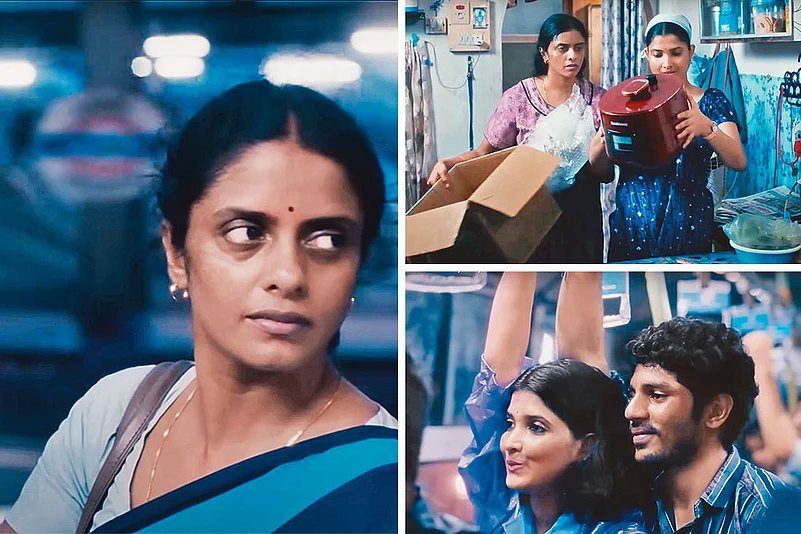Payal Kapadia's All We Imagine As Light has yet another feather in its cap, securing a nomination in the Best Motion Picture (Non-English Language) category at the 82nd Golden Globe Awards. Payal Kapadia has also been nominated for Best Direction (Motion Picture). With this, she has become first Indian to be nominated in the category.
Of Hope And Hopelessness In "All We Imagine As Light"
In Payal Kapadia's "All We Imagine as Light", the poetic language of desire is taken to its roots, nourished by the only language it lives and understands: of hope and hopelessness.

All We Imagine As Light, which won the prestigious Grand Prix at the Cannes Film Festival, was also shortlisted by France to represent the country at the Oscars 2025. The Malyalam-Hindi drama also bagged the Best International Feature trophy at the prestigious Gotham Awards 2024.
Here Manash Firaq Bhattacharjee dives into what sets this film apart:
Payal Kapadia’s All We Imagine as Light (2024) is a film not just about the travails of women migrant workers, but more specifically about their desiring bodies. If Prabha is waiting for the return of her husband who works in Germany, Anu is hiding her Muslim lover from the world. Both are Malayali nurses in Mumbai, and their Malayalam is to be read not merely as the story of a displaced tongue, but how that tongue displaces any singular claim of belonging to Mumbai.
Prabha and Anu’s Malayalam is not a language out of place, but a language searching for a place in the world. Language must echo the precarious economy of migrant lives. Prabha and Anu’s Malayalam places the question of language beyond the contours of cultural territory to register the presence of people whose dislocations desperately seek both comfort and recognition.
In the film, Prabha and Anu become the eyes and voices of Mumbai’s migrant-body. The body of a city is also reflected in bodies that inhabit its peripheries, its shacks, in the silence and desires of its migrants. In the process, Prabha and Anu also acquire new selves that navigate between their being who they are and what the city helps them become (or prevents them from becoming).
The film closes in further to reveal the state of the desiring bodies of the two nurses. When Prabha presses the rice cooker close to her groin, it transforms into a poignantly amusing sex object. We see her unshaven legs as a mark of bodies that lie outside the zone (and norms) of the cosmetic industry. We experience Prabha’s intense moment with herself that is indifferent to our eyes, seeking empathy alone. When Anu changes her clothes before the mirror in Prabha’s shack, we see her bare torso perform a mundane activity. We see Anu looking at herself and that displaces our gaze, as we see her looking at herself. The audience’s gaze is challenged (and displaced) by such sensitive cinematic manoeuvres.
When Anu, later in the film, makes love to her lover, Shiaz, we don’t see expert lovemaking, but clumsy, hesitant and probing gestures by lovers learning to cross a mental barrier. They experience lovemaking also as a place recovered from prying eyes, where they can abandon themselves to what circumstances denied them for days. It is a ritual before all rituals, an offering where, for once, gods are forgotten. Only the material is the most intimately divine.
All We Imagine as Light brings dark-skinned (female) bodies centre stage, and displaces the advertisement of fair-skinned bodies in mainstream cinema. This is, in itself, the most understatedly fierce political move in Kapadia’s wonderful film.
And yet, Kapadia’s eye for the lyrical makes her protagonists shine with a poetic beauty that lingers long after the film ends. There are fleeting moments of Prabha and Anu passing through the city like ordinary people, invisible to the world around them, but visible to us in their shining eyes and gentle voices, no longer ordinary because of what we know about them from their life’s predicaments. The camera turns them into stars on screen and delivers a new meaning of stardom. This is the other political aspect of the film: the agonising spell of the ordinary. This spell makes them beautiful in those fleeting moments. The audience, fed by glossy charms of beauty, is challenged to consider what they miss in their lives and on screen.
In Kapadia’s slow and attentive film-making, the body appears as light. There is no other light in the world to recover and hide in than the body. The body lives through the darkness of the city’s many hazards, the risky economy of working-class life, to dream of a time and place where the body will shine in the proximity of love. There is no other solace to (and respite from) a life of hard labour. Love is expressed as desire in the film. The idea of romantic love is not always to be found in expressions of rhetorical, or linguistic finery, but in broken, incomplete syllables, closer to poetry. Acts of love are also poetic by the same broken measure of language. In All We Imagine as Light, the poetic language of desire is taken to its roots, nourished by the only language it lives and understands: of hope and hopelessness.
While watching Kapadia’s film, we are transformed by a world that is closer to us than we imagine, or witness. The film brings their lives to light and enlightens us. Prabha is reticent, Anu is forthcoming; Prabha is understanding, Anu is reckless; but together they form an arc of light struggling against the darkness. They are sisters of a language of care that tempts them to be kind to each other. Their lives suggest that those who intensely experience the risks of longing can be really kind.
(Views expressed are personal)
Manash Firaq Bhattacharjee is the author of Nehru and the Spirit of India. He is currently working on a book on Gandhi

















